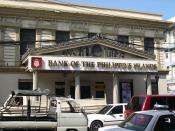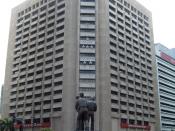Qualitative Analysis: BDO & BPI
BDO Unibank, Inc., or commonly known as Banco de Oro Unibank, and BPI or Bank of the Philippine Islands are among the largest and top universal banks in the Philippines.
OPERATIONS
The two banks are nearly similar in terms of operations. There is little difference when it comes to the services offered. For instance, the two banks have similar categories of services, personal category and business category. Although there are different services offered by the two banks in each category, we can see similar services. The underlined words refer to similar services offered by the two banks. BPI's personal services include Deposit, Loans, Credit Cards, ATM/Debit Cards, Prepaid and Gift Cards, Remittance, Asset Management, Insurance and pre-need. BDO's personal services include eBanking, Accounts, Trust and Investments, Loans, Credit/Debit Cards, Remittance Services, Insurance, and Private Bank. BPI's business services include Deposits, Asset Management, Cash Management, Loans and Lines Credit, Funding and Guarantees, Sustainable Energy Finance, Leasing, Trade Finance, Correspondent Banking Services, Merchant Accreditation, Corporate Cards.
BDO's business services include Cash Management, Loans, Treasury, Trade Facilities, Investment Banking, Insurance, Leasing & Financing, Trust & Investments, and Cards.
LIQUIDITY
Liquidity is the ability of a firm to satisfy short-term obligation as they come due. A company that is consistently having trouble meeting its short-term debt is at a higher risk of bankruptcy. One good measure of liquidity is the Current Ratio. Current Ratio is computed as Current Assets/Current Liabilities. Current ratio is a financial ratio that measures whether or not a company has enough resources to pay its debt over the next business cycle (usually 12 months) by comparing firm's current assets to its current liabilities.
BDO's current ratio for the year(s) 2010, 2011, 2012 are 49%, 43%, and 46%. BPI's current...


